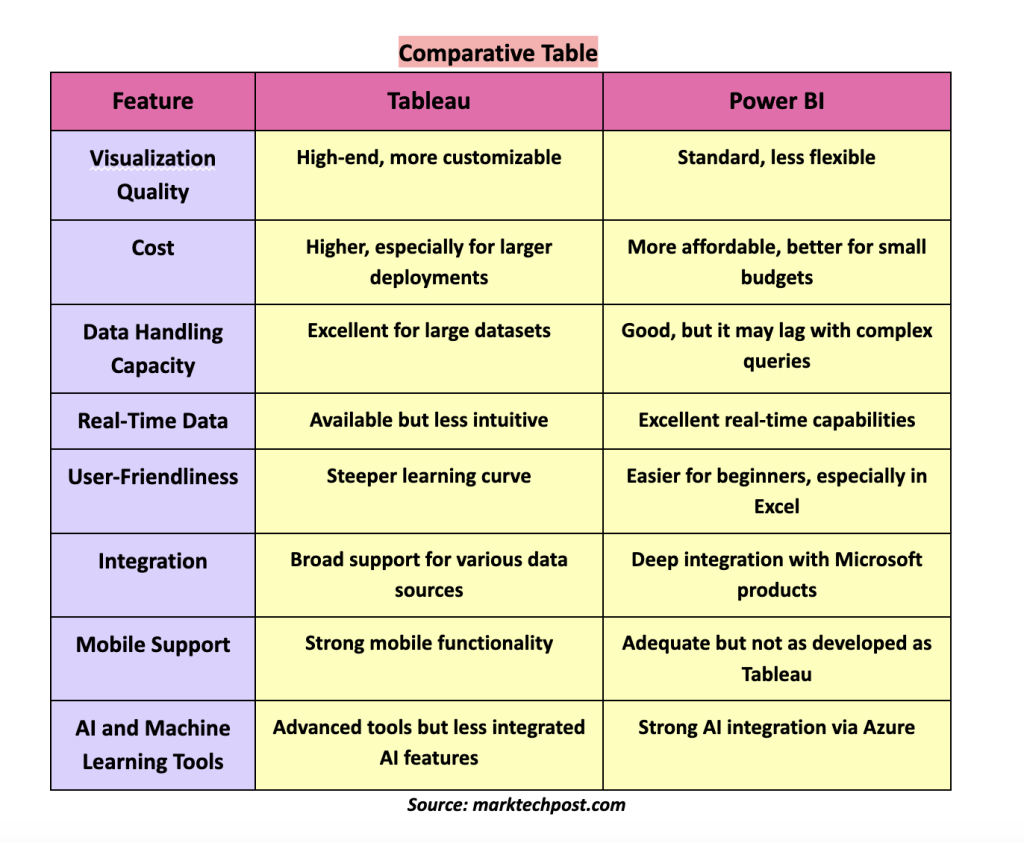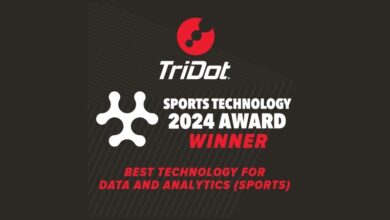Tableau vs Power BI: A Comparison of AI-Powered Analytics Tools

In the dynamic world of data visualization and business intelligence, Tableau and Power BI stand out as leading tools. Both platforms harness the power of AI to provide deep insights and make data-driven decisions more accessible. Let’s explore the key features, advantages, and disadvantages, culminating in a comparative table summarizing their differences and similarities.
Tableau by Salesforce is renowned for its powerful data visualization capabilities. It offers users sophisticated tools to create detailed and interactive dashboards. It excels in handling large datasets and provides extensive customization options, making it a favorite for data analysts seeking to delve deep into analytics. Despite its higher cost and steeper learning curve, Tableau’s robust functionality and strong mobile platform make it a top choice for enterprises needing comprehensive data exploration tools.
Key Features of Tableau
- Rich Visualizations: Tableau is renowned for its advanced visualization capabilities, allowing users to create complex and aesthetically pleasing data visualizations.
- Flexibility: Offers a highly flexible interface for data analysis, supporting various customization options.
- Mobile Support: Excellent mobile support that ensures dashboards are accessible and interactive on smartphones and tablets.
- Data Handling: Handling vast amounts of data without significant performance degradation.
- Vizable: A unique feature where users can explore data using touch gestures on their mobile devices.
Pros of Tableau
- Exceptional data visualization capabilities.
- Supports extensive data manipulation and blending.
- Strong community and robust support resources.
Cons of Tableau
- It is more expensive than Power BI, especially at the enterprise level.
- The steeper learning curve for new users.
- Unlike Tableau Server or Tableau Online, the desktop version has limited sharing and collaboration features.
Microsoft’s Power BI product stands out for its seamless integration with other Microsoft services and affordability, making it especially appealing to small and medium-sized businesses. It boasts user-friendly interfaces that are particularly accessible for users familiar with Excel and integrates well with Azure for advanced AI capabilities. While its data visualization tools are less flexible than Tableau’s, Power BI’s strength lies in its real-time data processing and overall ease of use, providing a cost-effective solution for those embedded in the Microsoft ecosystem.
Key Features of Power BI
- Integration with Microsoft Products: Seamlessly integrates with other Microsoft products like Excel and Azure, making it a preferred choice for users entrenched in the Microsoft ecosystem.
- Cost-Effective: Generally more affordable, especially for small to medium-sized enterprises or startups.
- AI Integration: Includes AI tools such as text analytics and image recognition and integration with Azure Machine Learning.
- Real-Time Data Processing: Power BI can handle real-time data updates, which is ideal for live dashboards.
- Power BI Service: A cloud-based service that facilitates user sharing and collaboration.
Pros of Power BI
- Highly cost-effective with a low barrier of entry.
- Deep integration with Microsoft applications.
- User-friendly for beginners, especially those familiar with Excel.
Cons of Power BI
- It is less flexible in terms of visualization capabilities than Tableau.
- Performance can lag with very large datasets or complex queries.
- Less robust mobile support compared to Tableau.
Comparative Analysis
The following table compares Tableau and Power BI across various dimensions:

Conclusion
Choosing between Tableau and Power BI largely depends on your specific needs. If your priority is creating complex, highly customized visualizations and your infrastructure can handle the investment, Tableau might be the right choice. Conversely, if you are looking for a cost-effective solution that integrates well with Microsoft products and offers solid AI capabilities, Power BI could be more suitable. Both tools offer robust features that can cater to various business intelligence needs, making them leaders in AI-powered analytics.
Hello, My name is Adnan Hassan. I am a consulting intern at Marktechpost and soon to be a management trainee at American Express. I am currently pursuing a dual degree at the Indian Institute of Technology, Kharagpur. I am passionate about technology and want to create new products that make a difference.





